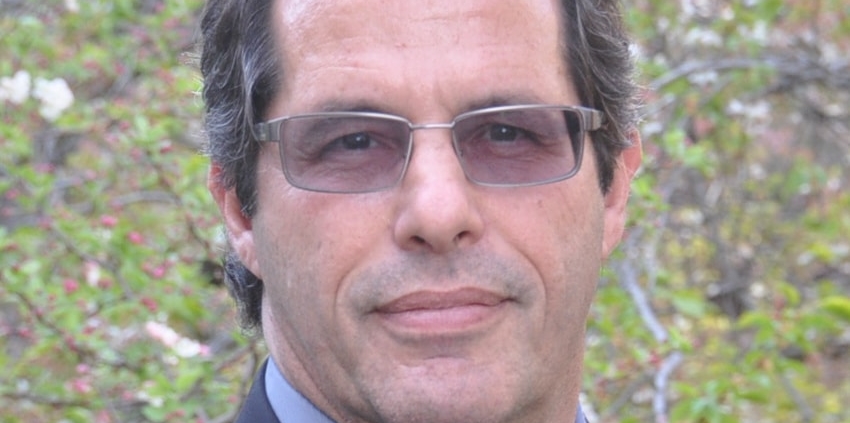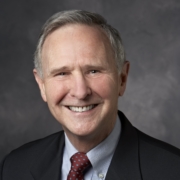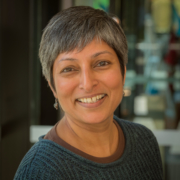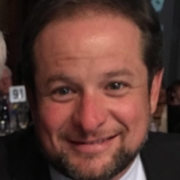Sustainable Development Goal 4 is all about education. Under the goal, there are seven targets, ranging from providing equitable access to education worldwide to making sure students have relevant skills for the future. The most revolutionary yet incredibly complex indicator is 4.7.
My guest today, Aaron Benavot, takes us through the history of target 4.7. How did the international community agree on such a revolutionary target?
Aaron warns us about the future of the target given there is no consensus on how to measure it across countries.
Aaron Benavot is a Professor in the department of educational policy and leadership at the school of education, University at Albany, State University of New York. He was previously the Director of the Global Education Monitoring report.
Citation: Benavot, Aaron, interview with Will Brehm, FreshEd, 141, podcast audio, December 24, 2018. https://www.freshedpodcast.com/benavot/
Transcript, translation, and resources:
Will Brehm 0:18
Aaron Benavot, welcome to FreshEd.
Aaron Benavot 0:44
Very glad to be here.
Will Brehm 1:43
So, to start, Aaron, I want to read SDG 4.7 and I’d like to hear what your reactions are. So, the target reads: “by 2030 ensure that all learners acquire the knowledge and skills needed to promote sustainable development, including among others, through education for sustainable development, and sustainable lifestyles, human rights, gender equality, promotion of a culture of peace and non-violence, global citizenship, and appreciation of cultural diversity and of cultures contribution to sustainable development.” What are your thoughts?
Aaron Benavot 2:26
I remember the first time that I read that. And, you know its kind of like, you have to take at least two breaths to get through the whole thing. And I also remember saying -typically, when I would present this to various people that I’ve come into contact with- it seems like everything that they didn’t have in the first six goals that they put into goal 4.7. So, the sense that one has is like everything, but the kitchen sink they put in here. And the other thing that I can recall is that when my colleagues who are involved in let’s say, gathering data, preparing information for monitoring purposes, they would look this target, and they basically started laughing because they thought this has got to be the most, you know -the feasibility of coming up with any kind of information systematic about any of these issues is just inconceivable. So, it was kind of laughed off. And so, you know, many times at the beginning, there was a certain -you know, people understood that these are important concepts. But on the other hand, you can’t be serious that you’re going to do this as a target in the new agenda. Yes, it’s aspirational. Yes, this is something that we’re trying to kind of move policies of countries in on a particular direction. But, you know, if we’re trying to hold governments to account to some extent, if they’re actually committing themselves to such a target, what does this mean, if you have no kind of systematic information? So, there was this kind of ambivalence. It’s lovely to have wonderful things, these concepts, but they’re very serious. And I think it took quite a few months where that attitude, this kind of poo-poo, attitude toward 4.7 began to change for all kinds of different reasons. There were, first of all and foremost, a lot of people who understood this is actually a very serious target. Typically, when I would present it, I would say to people: when you look at it, and you compare it to educational policies in the past, this is actually a revolutionary target. And no previous global educational policy regime, has there been any goal or target that speaks as it were to the humanistic, moral, social purposes of education.
Will Brehm 5:10
Usually, it’s more economic.
Aaron Benavot 5:12
Well, it’s not only economic, it usually was about, you know, getting kids into school.
Will Brehm 5:16
Access.
Aaron Benavot 5:17
Access. Making sure they complete at full cycle. Mainly primary and secondary education. Trying to make sure that you reach gender parity. A little bit, maybe other kinds of issues. They always talk about adult literacy, but that’s another kind of problematic target. Increasingly, they talked about early childhood, wonderful. And then there was this kind of vast, you know, category of quality. The quality was, you know, very much kind of all over the place. Yeah, historically, quality was all about inputs, you know, are teachers well-qualified, are there sufficient number of teachers? If the kids have enough textbooks? You know, how much do they spend per pupil? You know, how large are the classrooms? Do they have roofs over them? Do they have, you know, heating in the winter? Do they have air conditioning, you know, do they have access to textbooks, nobody really thought very much about what happens in the classroom?
Will Brehm 6:17
And is that where 4.7 comes in?
Aaron Benavot 6:19
Well, 4.7 opens up this issue about I mean, much of this new agenda is looking at outcomes. So, it’s much more about learning. Learning is really all over the place here. Learning, you know, basic reading skills, achieving a certain minimum proficiency in reading and mathematics, improving literacy, digital skills, employability skills, so in fact, they have this kind of economic relation. But this target also talks about learning, it talks about knowledge and skills needed to promote sustainable development, including among all kinds of other things. So, it’s also about outcomes but it talks about outcomes that have never been on the agenda of these things. So, in that sense, it is really without precedent. The other thing to pay attention about the target is that it talks about all learners. And so, it’s not just about learners in school, it’s also learners outside of school. So, it could be youth outside of school, it could be adults, I mean, the fact that most people when they think about it, many of the programs have been directed toward, you know, how do you promote education for sustainable development, or global citizens education in, let’s say primary and secondary schools, that already is a narrowing of the intent of the target that actually opens it up for all learners.
Will Brehm 7:52
So, on the one hand, it’s comprehensive in terms of “who” they’re targeting.
Aaron Benavot 7:56
Yes.
Will Brehm 7:56
But, I mean, even there’s so many different terms in that target. And so, one of the terms, global citizenship education. I have a student who is struggling! She struggles with this idea and has done this massive literature review of how all different academics and development agencies talk about it. And she comes back to me, and she says, I’m more confused now than ever. So, how on earth does the UN or UNESCO even begin to say, with just that one term? How do they then begin to say, how do we measure it? How can we agree upon particular measures or indicators of that target?
Aaron Benavot 8:36
So, I’ll answer your question, but I need to do a little bit of a backtrack here. There are terms here that have a real history in international politics. These actually go back quite a few decades. So, one of the things that it took me a while to figure out and partly because there really needs to be a history of how this thing was put together, is that people did see this target as a way of echoing concerns that had animated discussions decades ago and bring it under a kind of a new umbrella, or new framing. So, bunch of these terms actually have their own individual history and you could reconstruct it, you would need to do almost an archaeology of these different terms. And to your point, each of these terms does not have, by and large, a consensus around how they should be defined, how they’re conceived. So not only among scholars, but even among international organizations, there isn’t necessarily a consensus. Now, you could say that that is something that is needed precisely when you bring it around a table. People who come from all these different backgrounds, from all these different cultures, that speaks so many different languages, that part of the way that you build collaboration and a sense of solidarity around a document is to use terms that are understood by different people in different ways so that you can at least touch upon their importance, but still allow people to move forward. On the other hand, if you’re an academic, this is undermining -especially an academic who’s trying to quantify, so maybe an academic who gets global citizenship, let’s say, “well, what are the different dimensions of global citizenship? What are the precise definitions that I’m going to use? How do I take a conceptual definition and operationalize? Can I find something that there’s a fairly good alignment between kind of the measurement or the operational definition and the conceptual definition?” And then you, you know, find different ways, different measurement strategies to see if you can come up with, you know, various parts of global citizenship. The other thing that’s a little bit probably less known around this target is that there have been countries that have been pushing certain terms politically and other countries that have been pushing other terms. And so, this is also a kind of a way of bringing countries that have different, let’s say, interests to get them to agree on a single target.
Will Brehm 11:33
Do you have an example? Like, what countries were-
Aaron Benavot 11:35
The example here is that, the term education for sustainable development has an older history. It’s been supported through funding, and through all kinds of other mechanisms by the Japanese. And in fact, it’s really interesting, for the purposes of the 2016 Global Education Monitoring Report, we had a Japanese intern who actually read the Japanese literature around sustainable development, helped us to understand the very idiosyncratic history of the term in, Japanese academic circles, which is not widely understood. Most people think of this is as like a Scandinavian topic or concept that, you know, started whenever, let’s say, the 1980s and 1990s, but in Japan it has a very different kind of a history. But the Japanese have politically promoted this, okay. And then you have the Koreans. And they’ve been the big backers of global citizenship. And so, the notion of global citizenship for the Koreans has been kind of an engagement with the world. It aligns in various ways, with, let’s say, the notion of sustainability, but they’re using a different concept. So, it becomes kind of an umbrella term within which there are elements that are not all that dissimilar to some of the things under ESD. They also put quite a little, substantial money kind of on the table, as it were to promote this particular term. And its incorporation, let’s say, in the global educational targets. So that’s a very interesting I mean, and then there are other countries, promoted, more or less. There’re some countries that don’t even want to use the term global citizenship because they find it really an anathema to their -you know, education should promote loyalty, patriotism, national identity, a sense of belonging to a country. We did a study that looked at textbooks, you know, there’s a vast majority of textbooks, let’s say, that do history make no mention, or very little mention of countries outside of the borders of the country in question. So, which is one of the reasons, for example, that the OECD when they thought about measuring something like this have used a different term, which is global competence, and not global citizenship, because they know, there’s probably less political contestation, or, let’s say, antagonism or antipathy toward, let’s say, the notion of global competence relative to the notion of global citizenship.
Will Brehm 14:16
So, it’s interesting that there is this, international politics sort of demands this consensus building by adding terms that can be understood differently, or different terms that have different histories in these different member states. And then you sort of create this long string of these terms, like 4.7 to, in a sense appease or support everyone’s idea and get people to adopt the SDGs in the end. But like you said, there’s that academic side. And so, it seems like there’s going to be an inherent tension for when the UNESCO Institute of Statistics has to actually operationalize these targets.
Aaron Benavot 15:06
So here, the way to kind of understand it is that that all the 17 SDGs and 169 targets, including 4.7, were part and parcel of this long-protracted negotiation leading up to September 2015, when the 193-member states of the UN adopted the 2030 Agenda for Sustainable Development. The negotiations that preceded that were run out of New York. They were run by representatives of usually ministries of foreign affairs. International agencies were not involved deeply. There was lots of member state kind of in other words, if you had international agencies involved in some of these things, number one, we wouldn’t have as many SDGs, we would have many fewer targets, they would be formulated quite differently. I mean, the education sector was not really -I mean, the big decision by the education sector happened in May of 2014 when they got together Muscat, Oman. And at that point, they had to make a critical decision because up until then, there had been these two parallel tracks. There had been the Millennium Development Goals and there had been the Education for All goals. And these were running parallel to each other, they were different agendas. And then Muscat, Oman in May they decided to bring them together and to put their kind of agreement around this new post-2015, you know, they didn’t have a name for it yet, but the post-2015 consensus that was beginning to evolve in New York, which means that they were going to give up in some sense, their control over determining the education agenda, because now you had lots of other people, many of them, you know, having a voice in New York, rather than being in Paris. And so, the only way that they kind of try to bring more of their of the views of the education sector was to, first of all, the next big meeting they had was the Incheon meeting in May of 2015, and that was now building consensus of what the formulations would be of the targets. And then they could come to New York and say, listen, we had 160, 180 heads of state, we had civil society, everybody contributed, it was a very international process. And here’s what the international education community believes should be the key formulations. So here, the people in New York had to take pretty close attention. It wasn’t an international agency, it was international agencies convening a meeting in which member states were very present, who negotiated a very difficult text, it was called the 2030 Framework for Action in which these formulations began to take shape. So, to your point, then. After this, so when they finally agreed to this crazy architecture of 169 targets, the next big issue was how do you begin to develop something more concrete and the indicators of the measurement. And there the process kind of shifted. So, it no longer involved, as it were politicians and ministries of foreign affairs -it did to some extent, but now we’re talking about statisticians and the UN statistical commission. And so, they develop this agency, it’s called the interagency -I forget what it’s called- but it’s made up of statisticians, and people who really are number crunchers. And, they’re the ones who began to formulate the indicators. And there are 230 indicators. And that’s a very different kind of a process, okay. So, this is what now they’re trying to measure. We’re not trying to measure the target. They’re trying to measure the global indicator, okay.
Will Brehm 18:57
And there’s agreement on that indicator?
Aaron Benavot 18:59
Up until now, there’s been agreement that this is the first indicator that they agreed on, we’ll come back to that in a moment. But I just want to point out that in some ways, this global indicator has reduced a little bit the scope of the target. Now, we are mainly talking about things that are going on with formal education. So, we’re not including all learners, right. Instead of looking at the outcome. So now we’re looking at input. Are they mainstreaming these areas, these thematic and topical areas into policies, curricula, teacher preparation and assessment?
Will Brehm 19:41
Yeah, so we’re not worried about what the student learns after finishing school, how they act?
Aaron Benavot 19:47
Well, let’s just say in the absence of any kind of existing methodological instrument to actually capture the outcome of this kind of a target, then they rely on the input. It’s a fair point. But it basically assumes precisely what you’re saying that the more a country would mainstream GCED, global citizenship education and ESD in their policies in their curriculum, and their teacher training and their assessments, other things being equal, it should basically produce students who have more knowledge and skills. Notice, by the way, it doesn’t talk about attitudes and dispositions, which many people argue are probably as important, if not more so, in this particular area. You could maybe kind of take the idea of skills and say, well, there’s hard skills and soft skills, and maybe kind of bring it in the back door, but the assumption that the countries that are mainstreaming this into these kind of policy areas, and whatnot, are going to produce students who are going to have more knowledge and skills, and these are not epiphenomenon that, you know, they’re just going to do it for a test and then forget everything. Rather, they’re going to carry it with them into adulthood, that’s a pretty big assumption. And it’s not like we have a lot of evidence around it.
Will Brehm 21:04
Yeah, and, I mean, and the assumption that, you know, you might know, a lot of information about climate change but you’re still going to go buy the gas guzzling, SUV car. So, you know, we can all agree that climate change is happening, but we’re still going to hop on the airplane and travel all over the world.
Aaron Benavot 21:20
We can know about the science around it. We can even think that it’s important. We can have the right attitude, but it doesn’t mean we change our behavior.
Will Brehm 21:27
It also sort of misses that the students in Australia who are protesting today recently, all about they want more climate change education, but the government is saying no, and so the students are protesting. And to me that sort of symbolizes global citizenship. They are participating as active citizens on a topic of global importance, and that also wouldn’t be captured in any of the indicators or in the indicator of SDG 4.7.
Aaron Benavot 22:00
It would not. And that actually brings up a very important point, again, the limits of the indicator because even for young people, students and young adolescents, there are lots of extracurricular activities or out of school activities. They could be going to museums, they could be going to scouting. They could be doing all kinds of youth organizations, they can be demonstrating in the streets, they can learn a lot, let’s say through various non-formal educational activities, or even informal activities, which are very, incredibly important with respect to the knowledge they gain, the attitudes they have, the skills they may have. And that’s certainly not captured in the current indicator.
Will Brehm 22:43
So, you have been an academic and then you worked with UNESCO as the director of the Global Monitoring Report or the Global Education Report, or what is it called?
Aaron Benavot 22:55
The Global Education Monitoring Report
Will Brehm 22:57
That’s right, okay. The GEM Report. More acronyms and terms that are hard to keep track of when you’re dealing with international politics. And now you are back in the academic world, but you still maintain a strong foothold in the UNESCO sort of policy debates and the SDGs in particular. So, I want to ask you, what is the role of academics in this sort of convoluted process of not necessarily formulating the SDGs, but three years after their adoption, what have academics done? Or what could they do, or what can they do in the future to sort of help us accurately understand if these SDGs are being met? Or maybe providing some sort of critical angle on areas the SDGs are simply missing?
Aaron Benavot 23:50
I think academics can play a lot of different roles. Um, let me begin from the point of view of having been the director of, you know, a major international court on education, certainly those reports would not have been possible if not for incredible contributions and input that we received from academic experts from around the world. So partly what the team would do in advance, and as they prepared and thought through, I mean, even at the level of one, we put together a concept note, we would involve academics through various kinds of consultations, and they would say, you should look at this, these questions need to be looked at, you know, we know of some new studies, there’s lots of input there. After we had kind of a detailed outline, and we began to work on the zero draft, there were decisions about who do we go to, to ask them to carry out some kind of research or, you know, desk reviews of various kinds of issues or research around it. So, we would commission anywhere from 30 to 50 different, you know, background papers for a report and by and large, these are being done by people with academic degrees. They’re not always in universities, some of them are working in research institutes and other kinds of places, but they’re all very kind of scholarly informed, so the report would not be possible, if not for all these inputs. And that included both the thematic part, but as we’re talking about now, the monitoring part. So, when we began to think about how do we monitor target 4.7? What steps do I need to take as the director of the report? Who do I need to contact? Who might have information that I can use? So, we, you know, we knew that the International Bureau of Education in Geneva is a storehouse of just tons of curricular information. So, we kind of turn to them and ask them if they could support a process that they could go through some of the materials. We knew people that were involved in textbook research that we reached out to, we knew people who have been looking at teacher training programs in different parts of the world, we also thought about asking them if they could be involved. You know, there were ways for us to look at different policies from different sources. So we thought like academics, because we tried to think about, okay, here’s the concepts and these are the concepts that are in the target, here’s a little bit what we’re trying to, you know, figure out so, you know, what kind of content analysis might we be able to do once we would have access to certain kinds of documents or official statements, we need somebody to carry this out, we need to develop a bit of a coding scheme that we would agree we would work with the academics. And that was what we did.
Will Brehm 26:48
Is that how they measure this now?
Aaron Benavot 26:50
No, that was what we did for that report, okay. Cuz keep in mind me, it was an independent report. UIS at that point had not yet, you know, figured out -or UNESCO had not yet figured out- because they were also the agency that had the responsibility for measuring this. So partly UNESCO with the help of UIS had yet to figure out how they would go about kind of strategically measuring it. It came a little bit later. But we were already on our pathway to kind of figuring out some of these things we could do more systematically, some of them would take a lot more time. But we thought that for the purposes of the report is worthwhile to try to capture precisely what the global indicator talks about. At some point in UNESCO, somebody came up with the brilliant idea that UNESCO has this responsibility from, you know, some decades before that there had been this international agreement that was agreed by UNESCO member states around several of the concepts that are embedded in 4.7. And part of this agreement indicated that UNESCO should take stock in some kind of a survey once every four or five years, and the idea was that if you’re going to carry out a survey anyway, on some of these themes, why not expand it to now include things like global citizenship and Education for Sustainable Development that weren’t there in 1974, when this recommendation was adopted, but could be argued you could add it. Which made sense. So now what they were going to do is to say, we have a mechanism, we have the mandate to carry this mechanism out. Member states are meant to give us feedback on these particular things, we’re going to expand it a little bit so that it more closely aligns with target 4.7. And that’s the decision that was made. And then they worked with UIS to kind of figure out what would be the concrete kind of questionnaire? What would it look like? And, you know, what would the questions ask the member states to respond to? They basically took the global indicator and mapped out a questionnaire that had some, as it were, you know, you’re asked the request, can you provide so and so.
Will Brehm 29:08
But methodologically, it’s very different from doing some sort of content analysis using a coding scheme of documents put out by the government versus asking people’s perceptions based on a questionnaire?
Aaron Benavot 29:22
Well, I wouldn’t say its perception. So basically, it’s asking countries to self-report. So, it’s not exactly subjective, but it is saying, you’re allowing the countries to tell you what they’re doing without actually validating that information through some other means. So, the countries can say, “yea were doing all these wonderful things”, and that’s what they write on the questionnaire and nobody’s really checking it.
Will Brehm 29:51
There’s no validation of it.
Aaron Benavot 29:52
No, there’s no validation.
Will Brehm 29:52
So, what incentive would a country have to sort of say, they’re not doing any of this?
Aaron Benavot 30:15
Well, because there’s a certain level of transparency. In the end all this information is going to come out. And, you know, there’s governments that are reporting because it’s usually the governments that are reporting, but then you would have NGOs in the country saying, “the governments reported that they are mainstreaming human rights in their curricula. We don’t think that that’s the case”, you know, in other words, people will take them to task who really know what’s going on in the country. So, you know, governments they can’t really pull the wool over everybody’s eyes. There’s lots of ways in which -and the more you would do this the more it would let’s say become institutionalized and you would see trends over time so. But the fact of the matter -I mean, I haven’t seen all the data, there’s certainly a certain degree of, “this is what we intend to do not what we’re actually doing”. So, there’s a sense that countries are over-reporting the extent to which these things are being mainstreamed. And it’s also like, you know, what does it mean to mainstream? So, it could be, yeah, we have a sentence in the textbook that says, global citizenship, it’s mainstream, you know. And someone else who has, you know, first, four, five grades of primary education a whole hour devoted every week, to global citizenship or something along those lines that, you know, evolves and has a very elaborate curriculum, those things are treated equally in that kind of a response. Because the countries are basically saying, I mainstreamed here, and I mainstreamed there, there’s no difference. So, from an academic point of view, you would never get it published, right? Because somebody will come along and say, this is just, you know, this is not valid information. When we did our monitoring thing, you know, we basically say here are the documents that countries are producing. We have a coding scheme. We’re going to do a content analysis of the documents. The analysis can look at it more superficially, more in depth, but it basically is based on, you know, what they produce. It could be a textbook, it could be a national curricular framework, it can be an explicit policy, and you look at it, and countries determine the documents, but it still doesn’t tell you what goes on in the classroom. But you are using your own kind of objective measurement strategy to determine: Is it present? Is it absent? To what extent? And then you can report on it accordingly.
Will Brehm 32:19
So, is this like the first step? Because it’s interesting, like you said that the 4.7 was quite revolutionary, to even include it. And yes, there’s all sorts of measurement issues as you discussed in depth. But, you know, the optimist in you would say, Okay, this is sort of the first step, we’re building it up, that survey is certainly not perfect, but maybe there will be future steps that we can take and make it more robust, add additional measurement tools, or strategies or future indicators. I don’t know if that’s even possible. But I mean, would that be sort of the -not necessarily from an academic point of view, but from the international politics point of view, this is sort of pushing countries in a way to consider these aspects of education that we know people think are important.
Aaron Benavot 33:14
So yes, and no. The fact that these issues and topics have been placed on the agenda is important in and of itself. And it opens up all kinds of different actors, governmental, non-governmental, academics, you know, all kinds of civil society organizations say, listen, you’ve signed on to this agenda, this is one of the targets, we think this is really important, what are you doing about it? So regardless of all the reporting, international comparability, whatever, having it as a target, putting it on an agenda, having groups potentially getting organized to say, we promote these things, we think they’re important, we think our governments should be more involved in them, it produces all kinds of interesting activity at the national level that absent the target probably may still exist, but may not exist as extensively and wouldn’t have the same legitimacy as it currently does because it’s a target. So that’s important. But the other part of this would be to say, listen, the things that policymakers pay attention to are the things you can count and things you can demonstrate that you can, you know, maybe that they don’t agree with how you do the counting and how you build your index, and all kinds of other different things and your methodological strategy. But when you produce a number or some index, it’s a way of getting countries to be more proactive and indicate beyond just signing their name to a piece of paper, they’re doing something.
Will Brehm 34:51
The naming and shaming.
Aaron Benavot 34:52
Right. But I do think it is important. I mean, I do think that having some quantification or some systematic assessment, using even qualitative data about these issues, helps to promote them, helps to keep them on the agenda and helps to kind of secure commitments and policies, and resources to make sure that they are sustained. What’s the danger of saying, well, we tried to measure it, but it’s a not so hot measure we came up with, so, yeah, we’ve got some data. And then when countries look at it, they go, come on, you know, this is really not very serious. So, then there’s this kind of reaction to say, somebody has tried to measure it, they’ve done a fairly poor job. I mean, you know, I can give you anecdotal information of countries that know, they’re very seriously committed to some of the topics in 4.7 and the way in which some of the data got presented or organized in the current measurement strategy, it just doesn’t match. It doesn’t align very well. So, then they question the whole strategy, and they kind of question the indicator, they question the measurement, so then you end up maybe going backwards rather than going forward. So that’s a little bit the danger here.
Will Brehm 36:19
So how would you change the measurement strategy, if you could, you know, have a magic wand?
Aaron Benavot 36:23
Yeah. First and foremost, I probably would go back to the intent of the target, which is trying to capture the outcome. So, I’d really want to invest in developing modules that were, let’s say, culturally sensitive, or they could be used in different ways in different for different topics under 4.7. But there would be modules that countries could maybe integrate into their current assessment frameworks or systems that would try to tap into the extent to which learners both in school and maybe out of school have acquired the knowledge and skills around some of the issues here. Probably, what you would want to do is set up some kind of a platform that countries would be expected to place into the platform. And then, you know, UNESCO, someone else could be commissioned to basically go through them or come up with a strategy because you have to know quite a lot of languages to make a determination, and maybe it would have to be two different coders with some inter-reliability coefficient, and so on and so forth. But I mean, you can do it because we’re doing it for another study now. Now that I’m no longer part of the team. But we’re doing it for something similar, but it involves precisely that: Compiling documents at different levels that allow -and then using a coding scheme that you’ve developed- and systematically going in and trying to determine, you know, how much of a particular theme or topic is embedded in the intended thing and, you know, then you could get to this question, which is what we started with, I mean, is there -the more you have of the input, the more it’s being mainstreamed in the documents, does it actually show up in the, you know, the actual knowledge, but that would be somewhere down the line.
Will Brehm 38:25
Well, we’ll have to bring you back on. I mean we have 12 years until 2030, we’re only three years in, and we’re still talking about indicators.
Aaron Benavot 38:32
The global indicators that this agency, the UN agency has been, have developed these 230 indicators. They’re classified into three different tiers. So, when you have an indicator that the methodology and the definition around it are fairly well developed, and that data being collected for most countries in the world is called tier one. When there’s a methodology that’s fairly well agreed upon, but there isn’t global coverage, it’s tier two. And when there’s a concept or global indicator around which the conceptualization and the definition and the global coverage is lacking, it’s a tier three. What’s the danger? Or what’s about to happen: The current global indicator for 4.7 is a tier three indicator and as part of the UN kind of assessment of how progress is going forward in terms of the SDGs, they are looking at SDG 4 in a big high level political event in July of this coming year and in anticipation of this evaluation this agency is going through and looking at all the global indicators that have tier three status and it’s quite possible that this global indicator is going to be jettisoned.
Will Brehm 39:42
Really?
Aaron Benavot 39:42
Yeah, just like that they’re going to basically say, you haven’t been able to develop a clear methodology, there’s nothing global in scope, start again.
Will Brehm 40:13
So, we’re just going to get rid of it?
Aaron Benavot 40:16
There’s a significant probability that the global indicator that we’ve been talking about -about mainstreaming and policies and- is basically going to be-
Will Brehm 40:25
But then that would mean that target 4.7 is not going to be able to be achieved or not?
Aaron Benavot 40:30
Well, it can still be countries can make progress, but there’s going to be no indicator for it. In other words, the global indicator that is now there will be vanished. And I don’t exactly know what they’re going to do, will they come up with something else? Will they give UNESCO a mandate to say come back in six months and give us another indicator, I’m not sure exactly what they’re going to do. But there’s a real danger that this is going to happen. I have been informed by people who are quite knowledgeable that the strategy that UNESCO has attempted at this point is to try to find ways to move this particular indicator that currently has been defined from a tier three to a tier two status in which case it wouldn’t be jettisoned, but they haven’t succeeded so far. So that’s why I’m saying. It is quite likely -you don’t have to wait a couple years we might be able to come back in a couple weeks, literally. And I will tell you, the global indicator that they’ve had for 4.7 has been dropped. In which case lots of people think target 4.7 is wonderful but there’s absolutely no -they’ll have to come up with a whole new conceptualization and kind of concrete measurement strategy to go back and figure out how to measure 4.7. That’s a real possibility.
Will Brehm 42:05
We will have to bring you back on to give us an update about where we’re going and how we’re doing. So, Aaron Benavot, thank you so much for joining FreshEd.
Aaron Benavot 42:53
My pleasure.
Read an edited version of Aaron Benavot’s conversation with Will Brehm.
Have other useful resources related to this show? Please send them to info@freshedpodcast.com
The past and future of SDG 4.7









